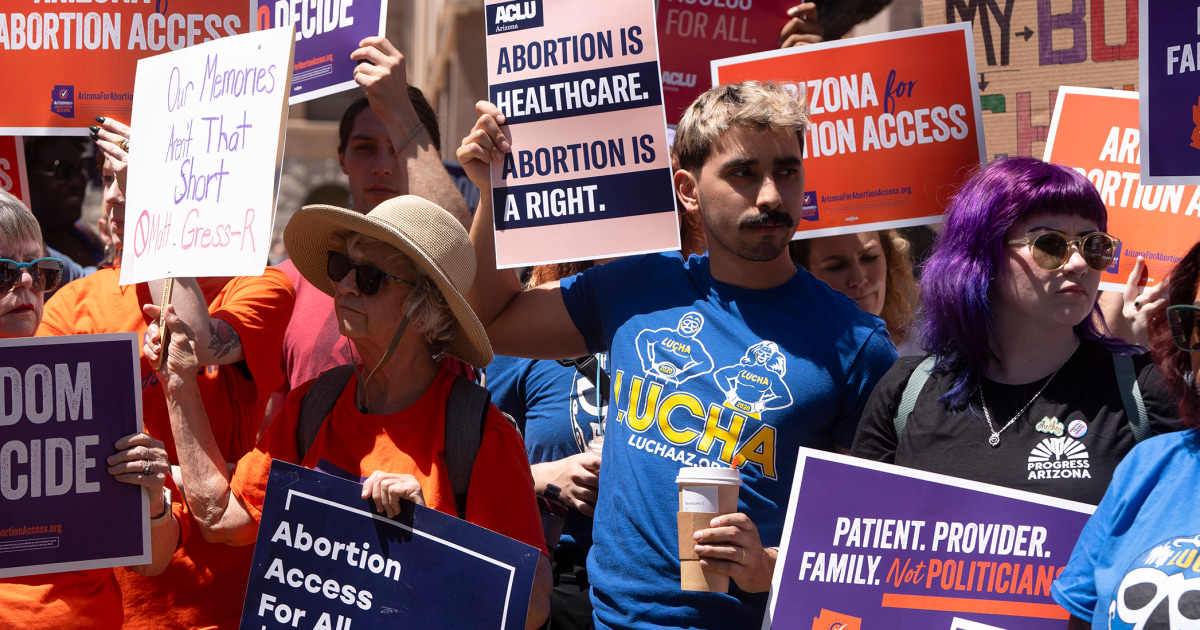
States with abortion bans are falling short in helping low-income families, experts say.
New research from Northwestern Medicine in Chicago compared state abortion laws to public programs meant to help families, such as paid parental leave and state-funded nutrition programs for families with children.
“States with the most severe abortion restrictions have the least public infrastructure to support families,” said Dr. Nigel Madden, a maternal-fetal medicine physician at Beth Israel Deaconess Medical Center, who led the study published Wednesday in the American Journal of Public Health.
Previous research has shown that about half of the number of women who seek abortions live below the federal poverty line, while three-quarters do not have enough money to cover housing, transportation and food. About 60% already have at least one child at home.
The majority of women in the United States who want an abortion can still get one, said Caitlin Myers, a professor of economics at Middlebury College who studies the economic implications of reproductive policies.
“But here is this minority of people who are trapped by the bans,” said Myers, who was not involved with the new research. “They cannot order pills online or travel to have an abortion in another state. They are disproportionately the poorest and most vulnerable of an already largely poor and vulnerable group of people who are seeking abortions.”
More than 28 million women who could become pregnant live in states with the most restrictive laws.
For the study, Madden and her team divided states into three categories based on their abortion laws, from the most restrictive to the least, based on data from December 2023.
Of the 21 states with the tightest restrictions, 14 have complete abortion bans with very limited exceptions, such as Alabama and North Dakota. Seven states had a gestational age ban, which ranged from six to 18 weeks
(Iowa was not part of the most restrictive group in the study, although in July a near-total abortion ban took effect in the state.)
The researchers evaluated each state on access to reproductive health care, and maternal and family social services. They also looked at whether states mandated paid family and medical leave, if the state had below-average enrollment in supplemental nutritional programs for families with children and childcare assistance for lower-income families.
Based on these factors, Idaho was the least supportive of low-income families. Abortion is illegal in Idaho, except if the pregnant woman’s life is in danger or if the pregnancy was the result of rape or incest that was reported to the police.
Alabama, Arkansas, Florida, Georgia, Mississippi and Missouri also provided the weakest aid to families, the study found.
“It’s not one thing, it’s across an array of programs they are falling short,” said Diana Greene Foster, professor in the Bixby Center for Global Reproductive Health at the University of California, San Francisco, who was not involved with the research.
The moderately restrictive group included 13 states, including Colorado, Nevada and Wisconsin, in which abortion is legal, but blocked by certain hurdles. Either Medicaid coverage of abortion was prohibited in these states or state law required a waiting period or that clinicians notify a minor’s parents.
The least restrictive group included 17 states, including California, New York and Maine, that had either no gestational age ban or did not ban abortion until 24 weeks of pregnancy or later, or that allowed Medicaid funds to pay for abortion.
Compared to less restrictive states, those with the most restrictive abortion bans had the lowest median percentage of Medicaid coverage outside of pregnancy and the highest rates of uninsured women of reproductive age.
They also had the highest percentage of births covered by Medicaid, 44%. The most restrictive states also had the highest median percentage –– meaning about half of the states had percentages higher than and half had lower –– of births in which families paid out of pocket, at 4%.
These states had lower enrollment in state-funded assistance programs and had lower income thresholds, meaning people had to be poorer to qualify for public assistance. Of the states with the strictest abortion bans, none had laws requiring employers to offer paid parental leave after a baby was born. Nationwide, just nine states have enacted laws that require employers to offer paid family leave under certain circumstances.
For everyone else, the federal Family and Medical Leave Act ensures employees who work for certain private or public entities get up to 12 weeks of unpaid leave per year with the promise that their jobs will be there when they get back. Not everyone qualifies, including people who work for companies with fewer than 50 employees. The leave is also unpaid.
“It means in a lot of cases, our most disadvantaged populations are not able to take the time off that they need after giving birth, to recover and to spend time with their baby,” Madden said. “It has both short- and long-term ramifications for people and their families.”
Low-income people are also more likely to be employed in shift work, on schedules that frequently change or that require them to work outside of business hours, which make it more difficult for them to seek child care, Myers said.
In an emailed statement, the anti-abortion group Susan B. Anthony Pro-Life America, said: “This year, more than a dozen states with pro-life laws approved new safety net measures to increase the support offered to women. The new measures range from child care assistance and child tax credits to Medicaid extension and safe haven policies.”
“I don’t think it’s accurate that this abortion debate is one side that is pro-child and the other is not,” Foster said. “Many people who have abortions want children in the future, but they want to have them under the right circumstances — with the right partner, with the money, the job, the housing, to support them well.”






